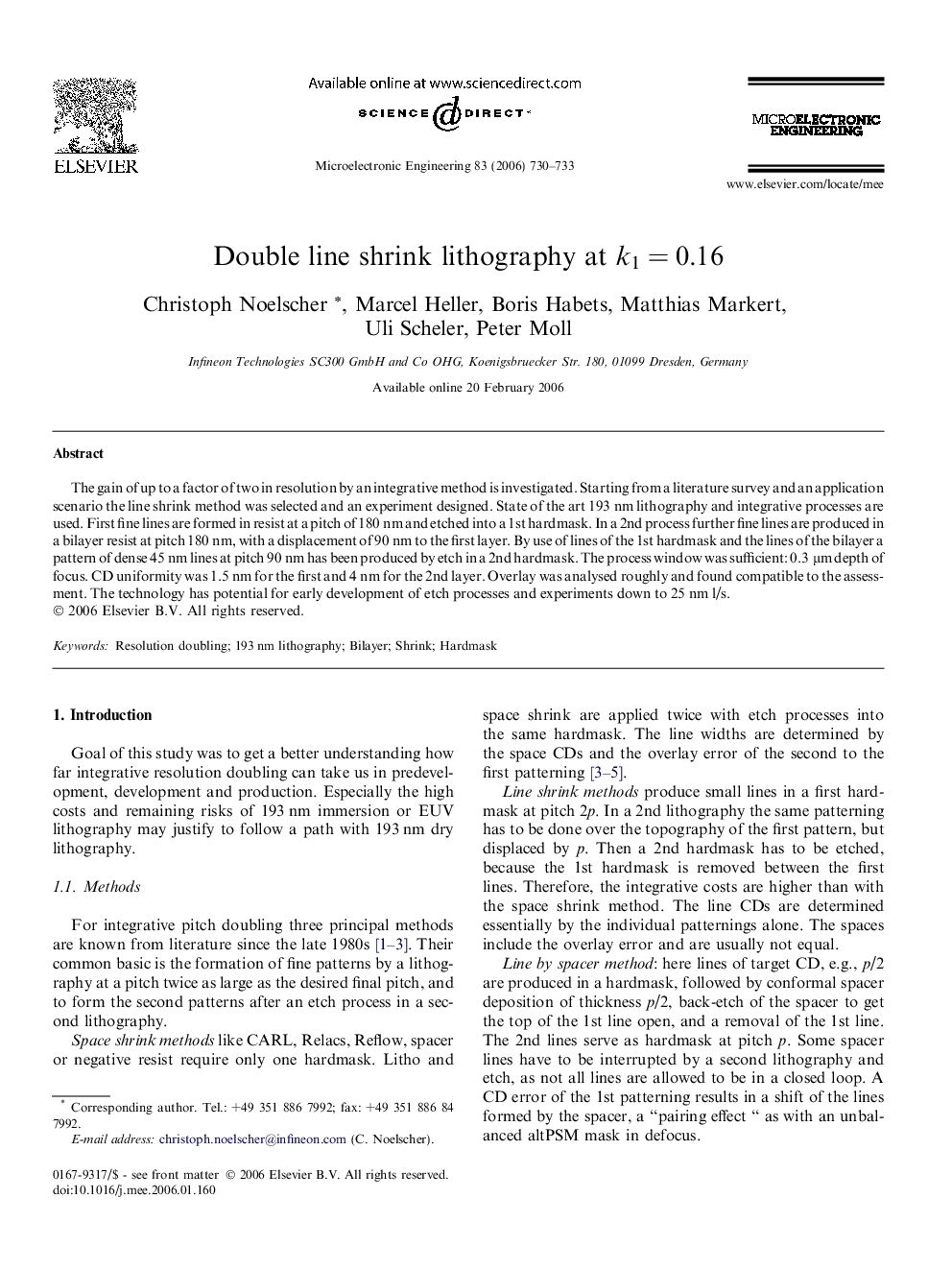| Article ID | Journal | Published Year | Pages | File Type |
|---|---|---|---|---|
| 540899 | Microelectronic Engineering | 2006 | 4 Pages |
The gain of up to a factor of two in resolution by an integrative method is investigated. Starting from a literature survey and an application scenario the line shrink method was selected and an experiment designed. State of the art 193 nm lithography and integrative processes are used. First fine lines are formed in resist at a pitch of 180 nm and etched into a 1st hardmask. In a 2nd process further fine lines are produced in a bilayer resist at pitch 180 nm, with a displacement of 90 nm to the first layer. By use of lines of the 1st hardmask and the lines of the bilayer a pattern of dense 45 nm lines at pitch 90 nm has been produced by etch in a 2nd hardmask. The process window was sufficient: 0.3 μm depth of focus. CD uniformity was 1.5 nm for the first and 4 nm for the 2nd layer. Overlay was analysed roughly and found compatible to the assessment. The technology has potential for early development of etch processes and experiments down to 25 nm l/s.
